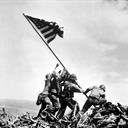Who is not considered to be one of the 'Renaissance masters' of art?
Known as 'the Renaissance', the period immediately following the Middle Ages in Europe saw a great revival of interest in the classical learning and values of ancient Greece and Rome. Against a backdrop of political stability and growing prosperity, the development of new technologies–including the printing press, a new system of astronomy and the discovery and exploration of new continents–was accompanied by a flowering of philosophy, literature and especially art.
The style of painting, sculpture and decorative arts identified with the Renaissance emerged in Italy in the late 14th century; it reached its zenith in the late 15th and early 16th centuries, in the work of Italian masters such as Leonardo da Vinci, Michelangelo and Raphael. Renaissance artists came from all aspects of society; they usually studied as apprentices before being admitted to a professional guild and working under the tutelage of an older master. Far from being starving bohemians, these artists worked on commission and were hired by patrons of the arts because they were steady and reliable.
Oscar-Claude Monet (1840 – 1926) was a French painter, a founder of French Impressionist painting and the most consistent and prolific practitioner of the movement's philosophy of expressing one's perceptions before nature. The term 'Impressionism' was exhibited in 1874 in the first of the independent exhibitions.
More Info:
en.wikipedia.org



